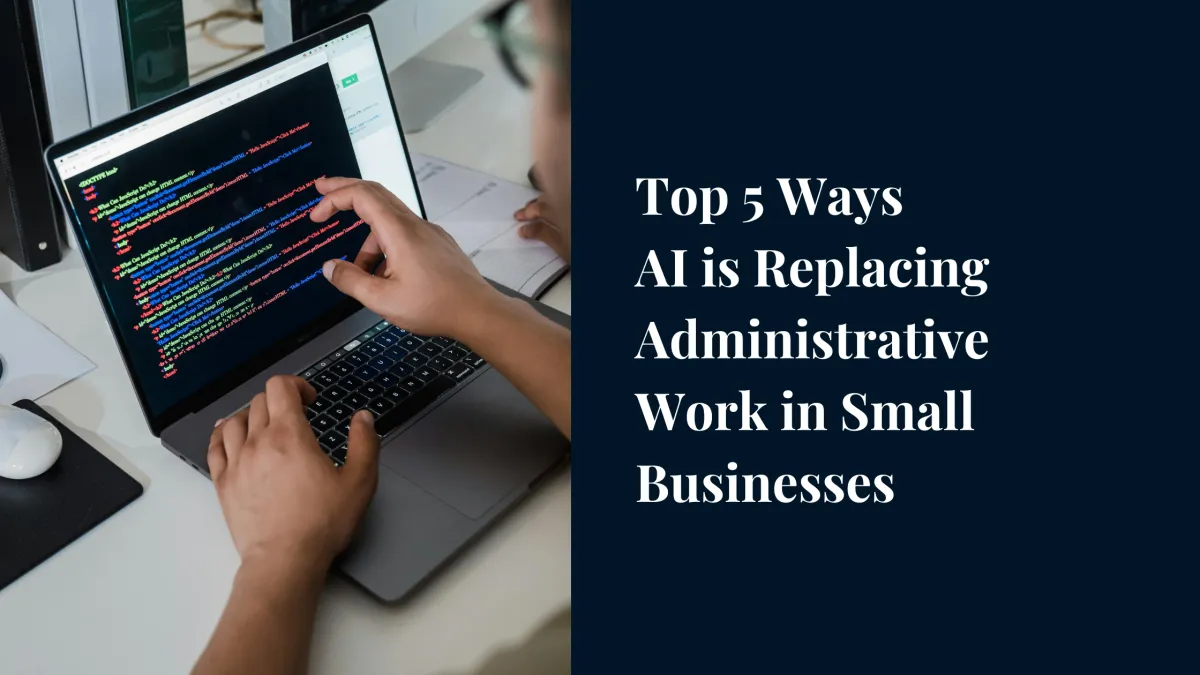
Top 5 Ways AI is Replacing Administrative Work in Small Businesses
In today’s fast-moving digital world, small business owners are drowning in admin. From managing calendars to replying to customer inquiries, it’s easy to get stuck in the weeds—leaving little time for growth or strategic planning. The good news? AI is replacing administrative work faster and more affordably than ever before.
At Syntra Advisors, we help service-based businesses automate the chaos and unlock real growth using custom AI solutions. In this blog post, you’ll discover five high-impact ways AI is replacing administrative work in small businesses—and how you can start benefiting today.
1. Automating Calendar and Meeting Scheduling
Gone are the days of endless back-and-forth emails. AI-powered scheduling tools like Calendly, Motion, and Clara automatically coordinate meeting times, send reminders, and update calendars in real-time.
This means:
Fewer no-shows
Less time wasted juggling schedules
A better client experience

2. AI-Powered Inbox and Email Management
One of the biggest time drains for any business owner is managing their inbox. AI tools like SaneBox, Superhuman, and Google's Smart Reply analyze your messages, prioritize them, and even draft replies.
By replacing administrative work like inbox triage, these tools:
Save hours weekly
Reduce overwhelm
Ensure important emails are never missed
Best Practice Tip:
Set filters for VIP clients and use AI to auto-tag or flag critical communications.
3. Client Onboarding and Data Entry Automation
AI doesn’t just streamline communication—it can fully automate the onboarding process. Tools like Zapier, Make.com, and HubSpot’s workflows can pull client data from forms, create records, send welcome emails, and even assign tasks internally.
This eliminates manual entry and ensures consistency every time a new client comes on board.
Common Mistake to Avoid:
Overloading your onboarding flow with unnecessary steps. Keep it lean and essential, then automate.
4. AI Chatbots for Customer Support
AI chatbots are no longer clunky or robotic. With advancements like ChatGPT, Drift, or Tidio, businesses can now deploy smart, conversational AI agents to handle:
FAQs
Appointment booking
Basic troubleshooting
This is one of the most efficient ways to replace administrative work while improving customer satisfaction and reducing support overhead.

5. Document and File Management
AI-driven tools like Google Workspace AI, Notion AI, and Fireflies can auto-summarize meeting notes, categorize files, and even detect duplicate content. If your digital workspace is a mess, AI can bring clarity and order in minutes.
Additional Tip:
Use voice-to-text AI tools for real-time transcription during meetings to reduce manual note-taking.
Book a Roadmap Call
Feeling overwhelmed by the possibilities? Let’s turn all this into a step-by-step implementation plan customized for your business.
Book a Roadmap Call to identify which administrative tasks we can eliminate with AI—and how much time and money you’ll save.
Additional Tips to Maximize Results
Start small. Don’t try to automate everything at once. Focus on your biggest time-wasters first.
Use integrations. Tools like Zapier and Make.com connect your apps to create seamless automations.
Track your ROI. Monitor how much time or cost each automation saves monthly.
Train your team. Even the best AI system is useless without team buy-in. Provide quick tutorials or SOPs.
Maintain human oversight. Use AI to assist, not replace, where a personal touch is still valuable.
Conclusion: Free Yourself from the Admin Trap
AI is no longer just for tech giants. It’s a game-changer for small businesses that want to eliminate busywork and focus on growth. By replacing administrative work across scheduling, email, onboarding, customer support, and file management, AI is giving business owners their time—and sanity—back.
At Syntra Advisors, we specialize in creating custom AI solutions that fit your workflows, goals, and team. You don’t need to figure it out alone.
👉 Book a Roadmap Call today and take the first step toward a business that runs smarter, not harder.